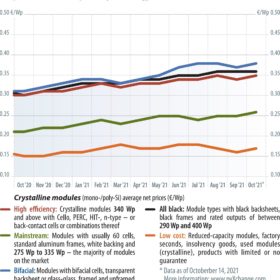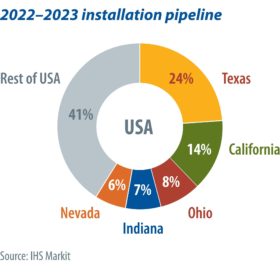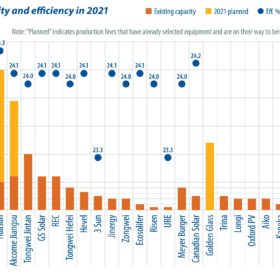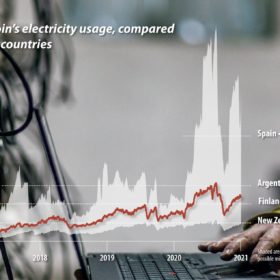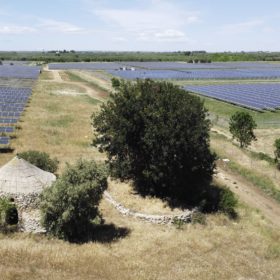Network for decarbonization
As world leaders converge on Glasgow this month for COP26, a host of pledges, commitments, strategies and ambitions will be unveiled by participants. The plethora of measures can be confounding, as can the framing of decarbonization as an economic cost, to be borne by the economies, companies and workers of the world.
Delayed reaction
As of Oct. 22, the overall market posted strong performance, with the Invesco Solar ETF leading the pack.
Module prices set to rocket back to 2019 levels
First, the bad news: PV modules will be caught up in the global wave of inflation. After a very brief respite, prices are picking up again for almost all module technologies. But the changes recorded for early October are paltry compared to the price increases still to come, writes Martin Schachinger of pvXchange. As of the cutoff date for this market survey, some manufacturers had already announced even more significant upward corrections for future deliveries. The price adjustments shown in the October index are thus only a tentative start to rises of no less than 15-20% over the price levels that prevailed just a few weeks ago. However, this will probably be the last price correction we can expect at the manufacturer level until the end of the year.
U.S. solar market in flux
Next year will set new records for the U.S. solar market, with 30.4 GW of installations expected. The utility-scale PV pipeline in 2022 is nearly 50% greater than 2021 and 2023, due to the combined effects of pandemic-related supply chain impacts, the solar Investment Tax Credit schedule, and other module procurement challenges. Over the next two years, solar installations will be concentrated in Texas, California, Ohio, Indiana, and Nevada, with large portions of the pipeline being developed by a few key players in each state. IHS Markit’s Eric Wright takes a closer look.
Looking past PERC
While the adoption of large-format wafers has driven a wave of capacity expansion for PERC, existing manufacturers and new entrants continue to evaluate TOPCon and HJT. An increasing number of HJT pilot lines and gigawatt-scale capacity expansion projects are appearing, as manufacturers see the advantages of fewer process steps, higher efficiency ratings, and better yield rates. The localization of equipment is also a driving factor. PV InfoLink’s Derek Zhao offers an update on the latest developments and process routes for HJT.
Energy crisis and the energy transition
There’s a famous saying: “Never let a crisis go to waste.” The current energy crisis has had a terrible impact on many consumers, but it has also given the energy sector a golden opportunity to get in shape for the energy transition. Jon Slowe, the director of Delta-EE, examines the impacts and opportunities of the energy crisis currently playing out in Europe and what it could mean for the renewables sector.
Crypto’s energy conundrum
In a financial world of stocks, bonds, foreign exchange, and credit cards, trillions of dollars are traded daily, with money flows handled by a bevy of databanks. In the world of cryptocurrency, billions of dollars worth of Bitcoin are traded through as many as 400,000 transactions per day, consuming the energy supply of a modernized country. The quirk is a “proof of work” feature that provides decentralized security. Is Bitcoin’s energy usage all for nothing, or is it a game-changer for renewable assets and generators? Tristan Rayner explores.
Pending approval
A surge of Italian PV project activity is soon expected, if the local authorities get out of the way. With market, financial and policy settings in place, the market is set to see a return to bustling project activity, with regulatory reforms clearing the way forward, reports Sergio Matalucci in Milan.
Building a new policy environment
Since the beginning of 2021, all new buildings constructed in the European Union must be “nearly” zero energy. This is a complex task requiring synergies among various stakeholders and technologies. Ilias Tsagas provides insight into the drivers and challenges toward this set goal, and shines a light on solar’s most significant role.
Electrons to replace molecules in US homes
Policy developments are likely to define decarbonization efforts and rooftop solar deployment in U.S. homes. Proposed legislation at the federal level is looking to accelerate electrification, while net metering developments continue at the state level. pv magazine USA’s Ryan Kennedy provides an update.


